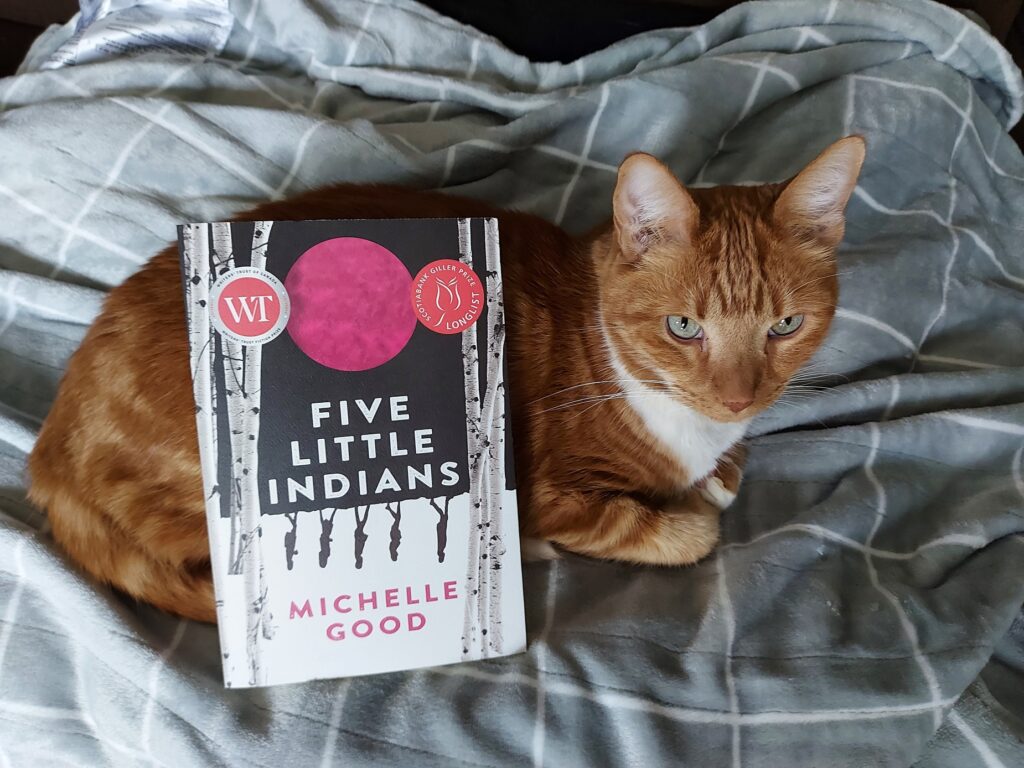Five Little Indians by Michelle Good

Five Little Indians is a novel about surviving a residential school, only to be faced with trying to survive in the world outside the residential school. It is a complicated story written in a rather simple style, which I think makes it somewhat easier to read. I cannot say I enjoyed reading Five Little Indians; who can enjoy reading about the abuse Indigenous children suffered at the hands of the Canadian government and the Catholic church? But I think it is important for books like Five Little Indians to be written and read so that white people understand the effects of their racism and cultural genocide on their victims.
Five Little Indians focuses on five Indigenous children who were sent to a residential school known as the Mission on an island off the BC coast in the 1960s, and how they cope, or do not cope, with the sexual and physical abuse perpetrated by the priests and nuns who run the school (which is thankfully not described in detail in the novel):
Kenny is twelve years old when he runs away from the Mission and finds his way back home to his mother, who has turned to alcohol in her despair over losing her child. Kenny grows up to become an alcoholic himself and a drifter who constantly feels the urge to leave, even when life is going well.
Lucy is sixteen years old when she finally gets to leave the Mission. Like many residential school children, she is sent out into the world with no money and no support, just a bus ticket to Vancouver. She ends up living her whole life in Downtown Eastside Vancouver. Lucy’s trauma manifests itself in counting things to calm down and compulsively cleaning her kitchen cupboards in the middle of the night.
Maisie is the friend from residential school that Lucy goes to find in Vancouver. Maisie seems like she has it together; she has a job, an apartment to herself, and a boyfriend who cares for her. But Maisie’s trauma runs deep, and she hides a tragic double-life from her friend.
Clara is a fighter, but her anger constantly gets her into trouble. She becomes an advocate for Indigenous people after learning that the only way to really help her people is to say what white people want to hear, not what they should hear.
Howie is brutally beaten by one of the brothers at the residential school when he is nine years old, beaten so badly that he is sent to a hospital. His family help him escape to the US so he does not have to go back. When he is an adult, he runs into the brother who beat him and ends up beating the brother almost to death. Howie spends many years incarcerated before he is given a second chance.
These five characters are not just connected because they each were sent to the Mission; they come in and out of each other’s lives over the years and their relationships become closely interconnected. Their shared experience at the Mission allows them to help each other to move on with their lives in a world that has been designed by white people to not allow Indigenous people, and other people of colour, to succeed. Five Little Indians is mostly told in the third person, but some of the characters get to tell their stories in the first person. I think this novel would have been even better if it was told completely in the first person perspective. Howie’s story about how a child from Saskatchewan ended up in a BC residential school, as told in the first person, is especially affecting and difficult to read. But this is not a novel of despair; Five Little Indians is a novel of hope that I recommend you read.